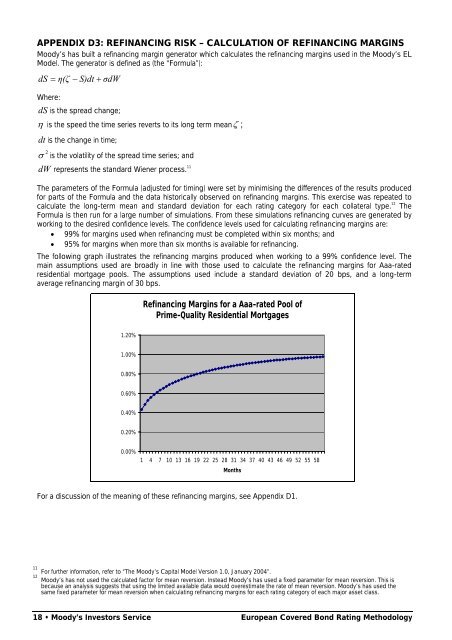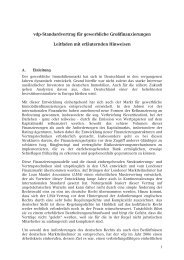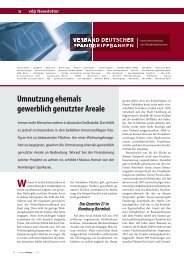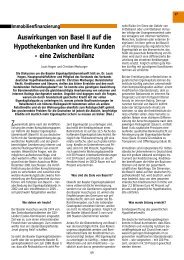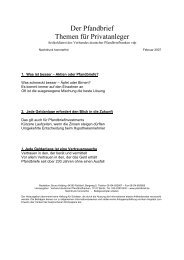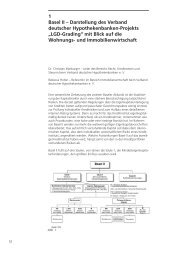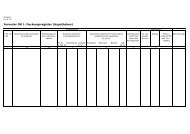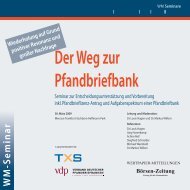Expected Loss Covered Bond Model
Expected Loss Covered Bond Model
Expected Loss Covered Bond Model
Create successful ePaper yourself
Turn your PDF publications into a flip-book with our unique Google optimized e-Paper software.
APPENDIX D3: REFINANCING RISK – CALCULATION OF REFINANCING MARGINS<br />
Moody’s has built a refinancing margin generator which calculates the refinancing margins used in the Moody’s EL<br />
<strong>Model</strong>. The generator is defined as (the “Formula”):<br />
dS = η(ζ − S)dt + σdW<br />
Where:<br />
dS is the spread change;<br />
η is the speed the time series reverts to its long term meanζ ;<br />
dt is the change in time;<br />
2<br />
σ is the volatility of the spread time series; and<br />
dW represents the standard Wiener process. 11<br />
The parameters of the Formula (adjusted for timing) were set by minimising the differences of the results produced<br />
for parts of the Formula and the data historically observed on refinancing margins. This exercise was repeated to<br />
calculate the long-term mean and standard deviation for each rating category for each collateral type. 12<br />
The<br />
Formula is then run for a large number of simulations. From these simulations refinancing curves are generated by<br />
working to the desired confidence levels. The confidence levels used for calculating refinancing margins are:<br />
• 99% for margins used when refinancing must be completed within six months; and<br />
• 95% for margins when more than six months is available for refinancing.<br />
The following graph illustrates the refinancing margins produced when working to a 99% confidence level. The<br />
main assumptions used are broadly in line with those used to calculate the refinancing margins for Aaa-rated<br />
residential mortgage pools. The assumptions used include a standard deviation of 20 bps, and a long-term<br />
average refinancing margin of 30 bps.<br />
Refinancing Margins for a Aaa-rated Pool of<br />
Prime-Quality Residential Mortgages<br />
1.20%<br />
1.00%<br />
0.80%<br />
0.60%<br />
0.40%<br />
0.20%<br />
0.00%<br />
1 4 7 10 13 16 19 22 25 28 31 34 37 40 43 46 49 52 55 58<br />
Months<br />
For a discussion of the meaning of these refinancing margins, see Appendix D1.<br />
11<br />
For further information, refer to “The Moody’s Capital <strong>Model</strong> Version 1.0, January 2004”.<br />
12<br />
Moody’s has not used the calculated factor for mean reversion. Instead Moody’s has used a fixed parameter for mean reversion. This is<br />
because an analysis suggests that using the limited available data would overestimate the rate of mean reversion. Moody’s has used the<br />
same fixed parameter for mean reversion when calculating refinancing margins for each rating category of each major asset class.<br />
18 • Moody’s Investors Service European <strong>Covered</strong> <strong>Bond</strong> Rating Methodology


